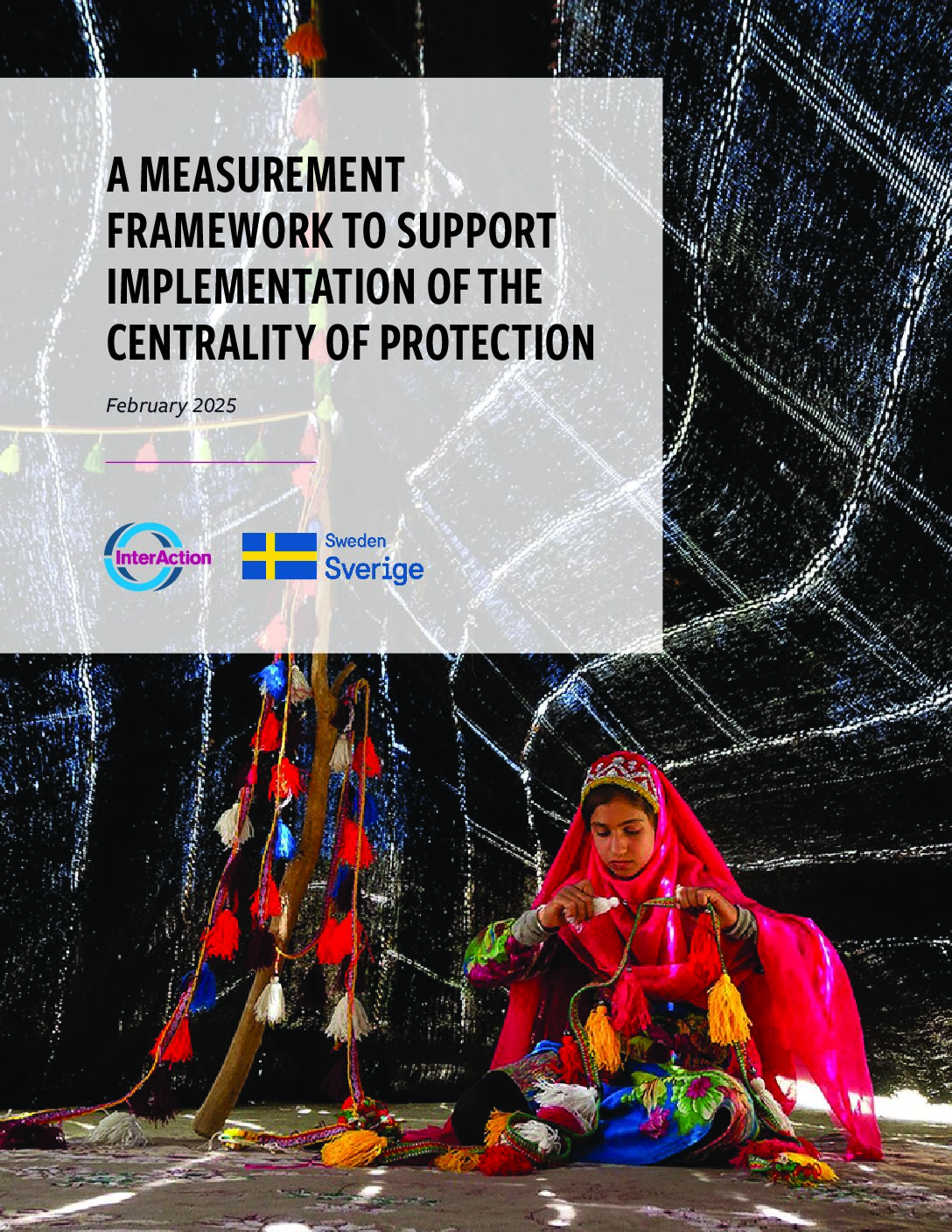Overview
The Measurement Framework for the Implementation of the Centrality of Protection (Measurement Framework) helps Humanitarian Coordinators (HCs) and Humanitarian Country Teams (HCTs) demonstrate how the IASC system is contributing to reduced protection risks.
The Measurement Framework provides HCTs with a tool to observe changes in protection risk patterns faced by community members such as changes in the behavior of armed actors towards civilians, or improvements in community-based threat monitoring systems to prevent protection violations occurring, or reductions in vulnerability of displaced persons to human trafficking or other forms of coercion or violence. Crucially, it provides tools for analyzing the contribution of the IASC mechanism towards these changes, alongside the influence of external actions and evolving crisis dynamics.
By collecting information about changes in protection risks patterns, and then analyzing the contributions of protection action plans toward the achievement of these changes, it is hoped that HCTs will be able to 1) make any necessary changes to their protection action plans on the basis of reliable information about how protection risks are evolving in real time, and 2) demonstrate accountability towards the protection action plans, Benchmarks, and ultimately, the application of the IASC Protection Policy.
In this way, the humanitarian system as a whole should be better equipped to demonstrably take collective responsibility for the reduction of protection risks for communities living through crises.
Key Elements in Line with Benchmark #3 Expand All
A simple presentation of intended pathways of change to reduce protection risks when using the Benchmarks.
A guide to assessing the entry points and constraints for making progress against the Benchmarks withing your specific HCT system.
Example indicators and areas of activity to measure changes in HCT practices that can support Benchmark implementation.
An outline of indicators and areas of interest where change in protection risks are expected be observed.
An overview of tools for data collection regarding changes in HCT practices and associated protection risk patters, as well as analysis of the HCT system’s constraints to the change observed.
A step-by-step guide to using data collection tools for outcome-level measurement in humanitarian crises, including responsibilities for data collection, frequency and use, and data sources.
The Measurement Framework for Implementing the Centrality of Protection
| Title of File | Language | |
|---|---|---|
| The Measurement Framework for Implementing the Centrality of Protection | English | Download |
